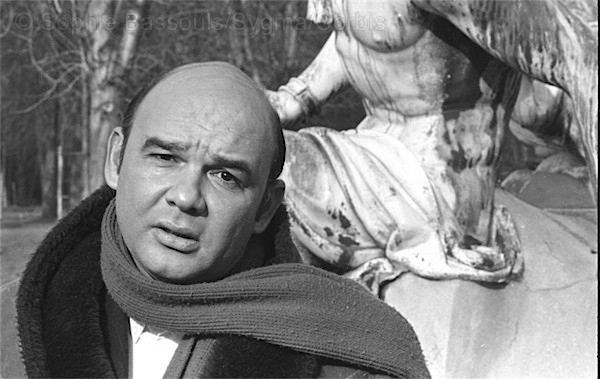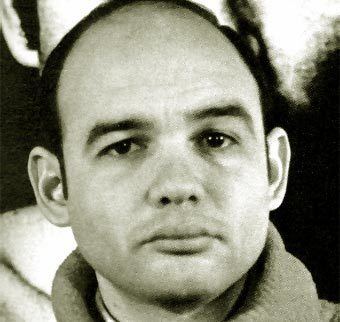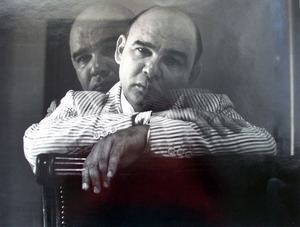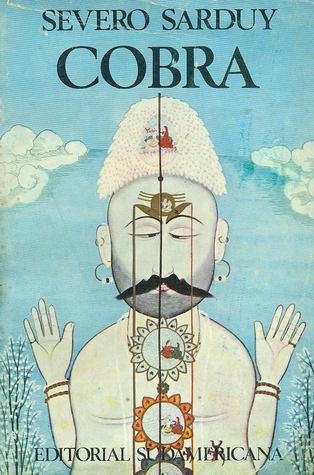Name Severo Sarduy Role Poet | Education Ecole du Louvre | |
 | ||
Awards Guggenheim Fellowship for Creative Arts, Latin America & Caribbean Books Cobra and Maitreya, Written on a body, From Cuba with a song, Beach Birds, De donde son los cantantes Similar People Jose Donoso, Carlos Fuentes, Juan Almela | ||
Severo sarduy entrevistado por joaquin soler serrano 1 6
Severo Sarduy (Camagüey, Cuba February 25, 1937 – Paris June 8, 1993) was a Cuban poet, author, playwright, and critic of Cuban literature and art.
Contents

Severo sarduy
Biography

Born in a working-class family of Spanish, African, and Chinese heritage, Sarduy was the top student in his high school, in Camagüey, and in 1956 moved to Havana, where he began a study of medicine. With the triumph of the Cuban revolution he collaborated with the Diario libre and Lunes de revolución, pro-Marxist papers. In 1960 he traveled to Paris to study at the Ecole du Louvre. There he was connected to the group of intellectuals who produced the magazine Tel Quel, particularly to philosopher François Wahl, with whom he was openly involved Sarduy worked as a reader for Editions du Seuil and as editor and producer of the Radiodiffusion-Télévision Française. Sarduy decided not to return to Cuba when his scholarship ran out a year later. Disaffected with Castro’s regime and fearful of its persecution of homosexuals and the censorship imposed on writers, Sarduy never went home. In 1972 his novel Cobra won him the Medici Prize. He was among the most brilliant essayists writing in Spanish and "a powerful baroque narrator, full of surprising resources." As a poet, he was considered one of the greatest of his time. He was also a more or less secret painter; a major retrospective of his work was held at the Reina Sofía Museum of Madrid after his death. He died due to complications from AIDS just after finishing his autobiographical work Pájaros de la playa (translated as Beach Birds by Suzanne Jill Levine and Carol Maier). To this day, his writings are difficult to access for a Cuban audience, whereas his books are available to the French and international public.

Along with Alejo Carpentier, José Lezama Lima, Virgilio Piñera, and Reinaldo Arenas, Sarduy is one of the most famous Cuban writers of the twentieth century; some of his works deal explicitly with male homosexuality and transvestism.

His work
There are hardly any boundaries between painting and writing in Severo Sarduy’s (Camagüey, Cuba, 1937 - Paris, 1993) pieces. His work is defined as "manuscript paintings" as they are paintings that are mostly done on paper that, as in the East, assumes calligraphy as the extension of poetic writing. In the seventy-six pieces that make up the exhibition of Sarduy at the Museo Nacional Centro de Arte Reina Sofía we can see that the artist also uses other materials such as coffee, saffron, cork and even his own blood. From these he extracts effects of dissolution, emptiness, fragmentation and transience, in such a way that it seems he understands painting as experimentation.
His collection
Sarduy’s collection contains edited typescripts and copies of his poems, essays, and translations, along with writings about him, interviews, notes, clippings, photographs, and other printed materials. Correspondence includes a group of postcards sent to Severo Sarduy and his partner François Wahl in the 1960s and 1970s from various European and Latin American writers and philosophers, including Roland Barthes, Alain Badiou, Reinaldo Arenas, Octavio Paz, and Jacques Lacan, and additional correspondence of French editor and structuralist François Wahl. The collection is held at Princeton University in New Jersey.
His influences
He admired Victor Vasarely, Wifredo Lam, Giuseppe Arcimboldo, Francesco Borromini, Robert Delaunay. He was close to the Argentinian artist and pioneer of Fractal Art, Carlos Ginzburg, whom he met in Paris.
